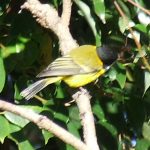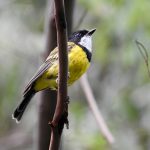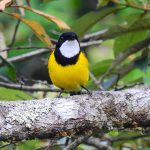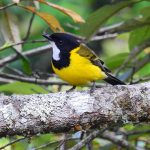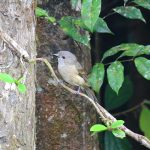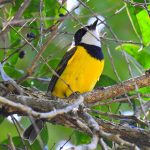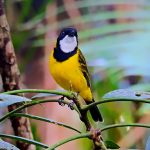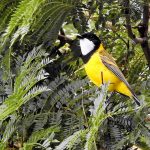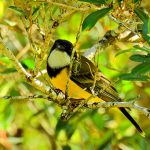GOLDEN WHISTLER
The Australian golden whistler is a songbird of striking beauty and melodious tunes, a true symphony of the Australian bush. With its vibrant plumage and enchanting calls, this bird is a jewel among the foliage, captivating birdwatchers and nature enthusiasts alike.
The male Golden whistler is a sight to behold, with his bright yellow underparts and a distinctive yellow collar that stands out against his dark, olive-green back. The females and juveniles, while more subdued in color, are equally charming with their greyish or olive-brown tones, accented with paler underparts.
These birds are small to medium-sized, averaging around 16 to 20 cm in length. They have a robust build, with a relatively large head and a short, stout bill perfect for foraging insects and spiders amongst the leaves and bark.
Golden whistlers can be found across a wide range of habitats, from the dense, verdant rainforests along the eastern coast to the lush woodlands, mallee, and even well-vegetated urban parks and gardens. They are a common sight in the regions stretching from southern Victoria and eastern South Australia, through New South Wales and Queensland, and up to the northernmost tip of Cape York Peninsula.
These birds are predominantly insectivorous, skilfully gleaning their prey from the foliage with quick, darting movements. However, their diet is not limited to insects; they also enjoy a variety of fruits and berries, adding a burst of sweetness to their meals.
The Australian golden whistler is not a migratory species, but some populations may move locally with the changing seasons, in search of abundant food sources.
Come breeding season, which typically spans from August to January, the male Golden whistler serenades potential mates with a repertoire of rich, melodious calls. After a pair bonds, they work together to build a cup-shaped nest, carefully weaving it out of grass and bark, and lining it with softer materials. The female then lays a clutch of eggs, which she incubates while the male stands guard and provides food.
The Australian golden whistler’s presence is a reminder of the delicate balance of nature and the importance of conservation efforts to maintain the diverse tapestry of life in Australia’s wild spaces. Their melodious song is not just a call to mates, but also a call to action for us to appreciate and protect the natural world around us.

